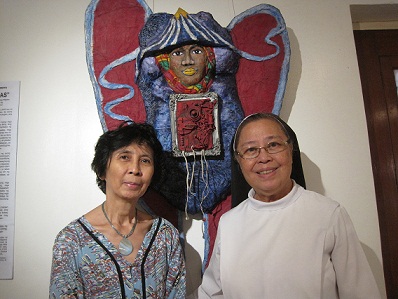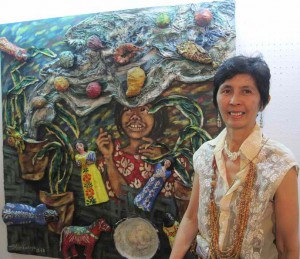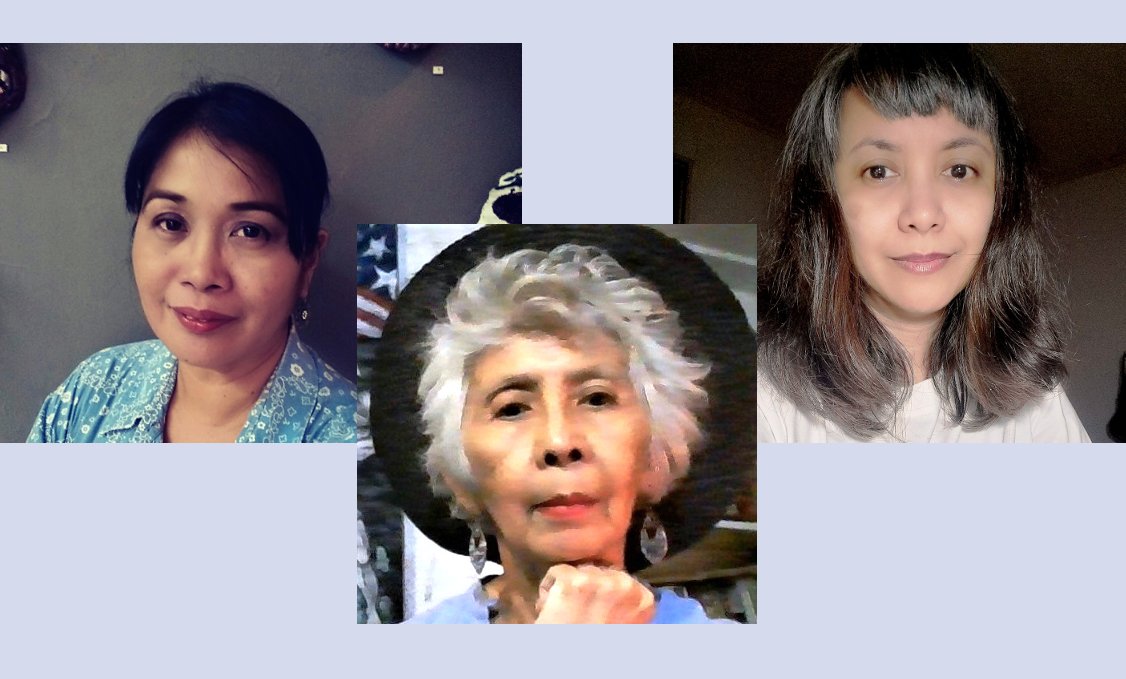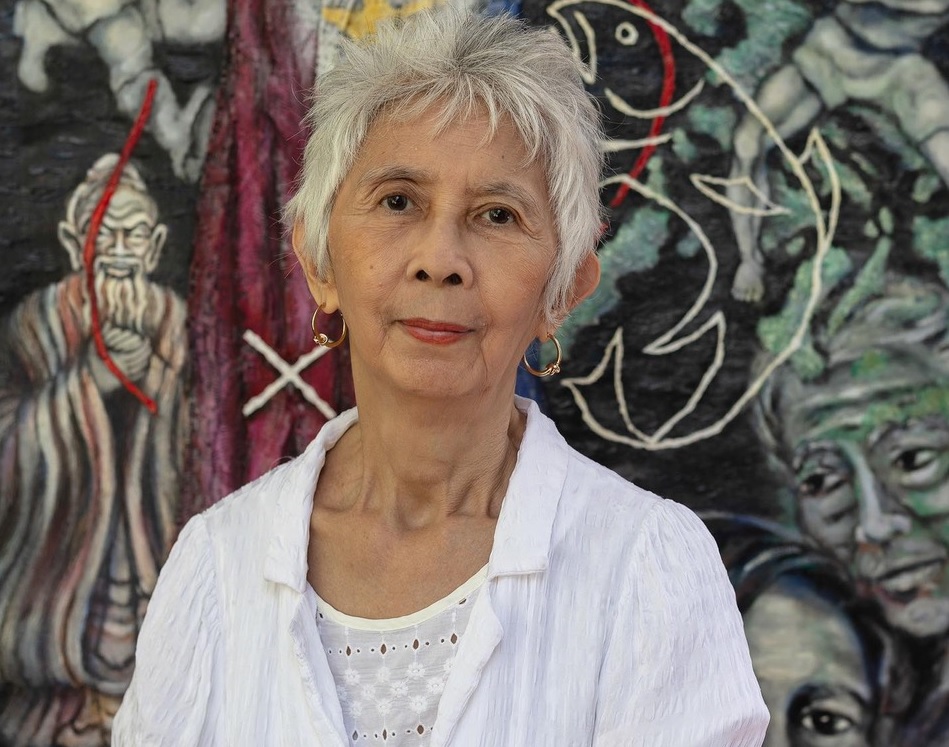Text and photos by ELIZABETH LOLARGA
VISUAL artist Imelda Cajipe Endaya, who forwards the feminist perspective in her art, has a solo exhibition at the St. Scholastica’s Museum appropriately called “Pusong Wagas.”
St. Scholastica’s College (SSC) is home to the Institute of Women’s Studies (IWS) that broke ground 25 year ago in putting feminism in the academic curriculum and in training college staff from utility workers to the highest-ranking professors. In the same year, Cajipe Endaya became a founding mother of Kasibulan (Kababihan sa Sining at Bagong Sibol), an all-women group of visual artists. Kasibulan is important in her personal and artistic timeline.
She said, “Brenda Fajardo was always a feminist before we discussed women’s issues. She was conscious of issues affecting woman in art such as depicting her with dignity and equanimity. Painting/ drawing of a nude woman shouldn’t be used for purposes other than an academic exercise in the studio. I admired Julie Lluch for being the first among us to declare herself a feminist. I think highly of Anna Fer who is keen in analyzing and articulating her feminist outlook on specific socio-political issues. With Ida Bugayong, they are my co-founders. We’re kindred spirits in our commitment to woman and nation.”
She criticized some women confreres: “We can never stop in our consciousness-raising about the importance of imaging women as dignified human beings–capable, productive, empowered, even if beautiful. We all like to depict beauty, but why do men. and even well-known women artists, continue to paint or sculpt women the way men would ogle at female bodies like they are meat, mindless playthings or delightful obedient pets?”
An alumna of the College of the Holy Spirit (CHS) and the University of the Philippines College of Fine Arts, she inevitably crossed paths with Mary John Mananzan, OSB, SSC-IWS founder, .
Cajipe Endaya and husband Johnny are parents to children who went to SSC. She said of Mananzan, “I used to listen to her socio-political orientations and fora on national issues. She was then president of the school and at another time, mother superior. As a teacher, feminist and organizer, she is knowledgeable in theory and practice, an effective communicator, a relevant educator who our country needs. She is totally inspiring.”
In relation to the IWS, she remains its friend-cooperator in projects, workshops, fora.
She practiced what she had learned from life as a woman, recalling how “I was living a secluded role of wife and mother in my youth (I married at 22) that taught me to become feminist which I expressed through the paintings I freely created.”
She said, “In raising our children, I strove to narrow the gender gap in teaching skills, tasks and responsibilities. All should know how to cook, keep house, look after each other, have an interest in the arts and academics, etcetera. My firstborn kept tab of me whether I was consistently feminist or not.”
Of Johnny’s contribution, she said, “He has always been supportive. He knew from the very start that art is my passion and focus. He never wanted me to stop. When feminist issues and gender roles came up in our personal lives, my own art became the diplomatic lubricant. I was a young wife and mother when I did my women and windows series, clear revelations of woman’s realization of her own subjugated role and wanting to rectify her circumstance. It became easier for us to thresh things out.”
The couple spent five years in the US that enabled her to observe feminists there and here: “Women there have to be self-indulgent, defiling. Filipino feminists cannot afford to be anti-society. We want to be peaceful, productive co-builders, co-creators.”
She did the comfort women installation piece there. She said, “The issue of apology from Japan was being taken up in Congress. It was a time when the Iraq War and US involvement in it was at its height. There were parallel issues. In contemporary war, women soldiers and women in the military experience sexuality issues.”
Her show’s title was a suggestion of Tin-aw Gallery’s Dawn Atienza and is the title of one of the works. “Pusong wagas” which means “pure heart.” The phrase comes from Andres Bonifacio’s poem “Pag-ibig sa Tinubuang Lupa.” The artist said it was short, catchy, timely enough with the national hero’s 150th birth anniversary on Nov. 30.
She again used found objects from her private space. “My hoards and stashes are matter of fact. The sorting out fell on my lap, on my siblings’, my own family’s generational personal items in my parents’ home. ‘Defragmenting’ the storage space of such items makes me sort out my memories, experiences, actions such that I reflect more expansively on my role and meaning as woman, as citizen, as Filipino.”
The feminists who inspire her are “Gregoria de Jesus who wrote about her own life. How brave, decisive and heroic she was. Sister Mary John made me unafraid of feminism, that it can be truly transformative and productive for everyone in society. My Lola Minggay sacrificed not being able to study but was intelligent, hardworking, put her brother, husband and son to school and supported relatives so they could study and improve their lives.”
(The show has been extended up to Nov. 30 at the museum on Vito Cruz, Manila.)



